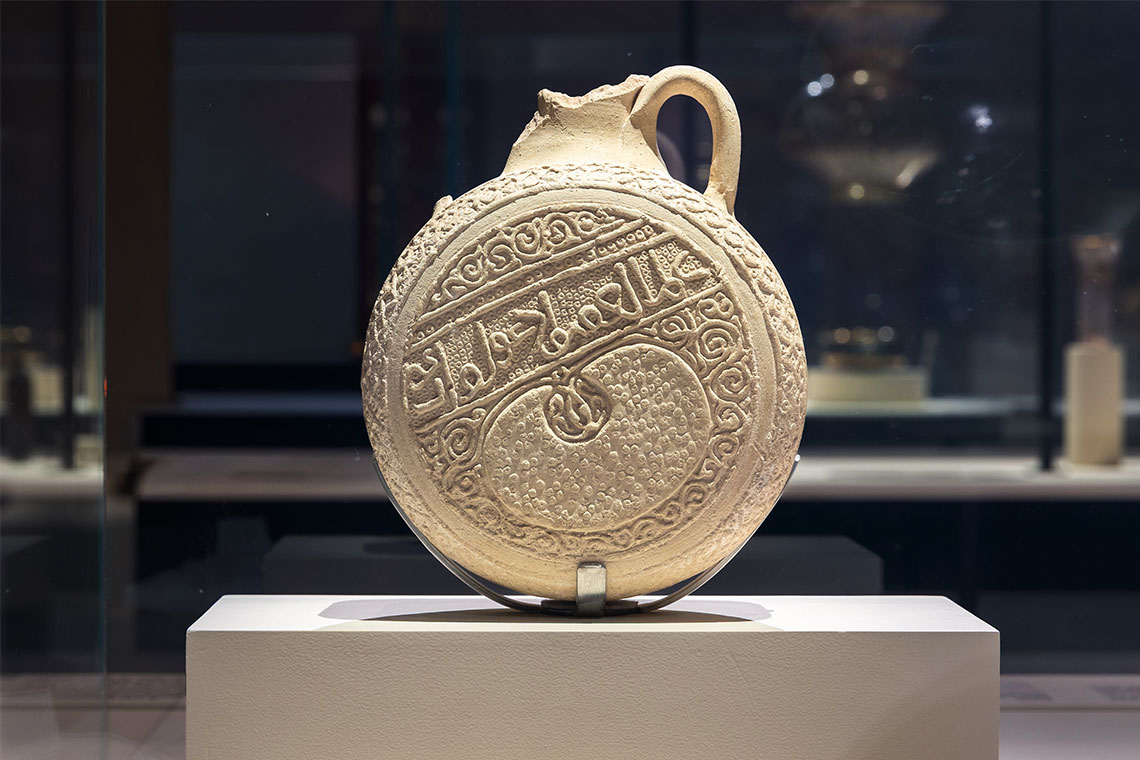Louvre Abu Dhabi’s current exhibition, Mamluks: Legacy of an Empire uncovers the political power, cultural connections and artistic achievements of the Mamluk Sultanate across centuries.
For over 250 years, the Mamluk Sultanate (1250–1517) shaped the political, cultural and artistic landscape of the Near East, its influence stretching from the Nile to the Arabian Peninsula and reaching into the Mediterranean and beyond. The rulers of this dynasty oversaw sacred Islamic sites, engaged in diplomacy with distant courts and fostered a society whose material culture was reflected in both power and in daily life. Currently on view at the Louvre Abu Dhabi, Mamluks: Legacy of an Empire brings together more than 270 objects from 34 institutions in 13 countries, offering visitors a chance to trace the history, artistry and networks of this influential dynasty.
Presented in partnership with the Muśee du Louvre and France Muséums, this exhibition marks the first major showcase on the Mamluk Sultanate in the Gulf region. Curated by Dr Souraya Noujaim, director of the department of Islamic Art at the Musée du Louvre and Dr Carin Juvin, curator for the Medieval Near East Collection with the support from Fakhera Alkindi, senior curatorial assistant at Louvre Abu Dhabi, the show is designed to highlight the political, religious and cultural structures of the Mamluk world.
Initially showcased at the Musée du Louvre in Paris in the spring of 2025, the Abu Dhabi iteration of the show expands on its foundation, incorporating regional collections and exclusive loans to highlight historical lands and cultural connections between the Gulf and the Mamluk world. The exhibition is arranged in seven thematic sections, each revealing a facet of Mamluk society. The opening section introduces the rise of the Mamluks from military slaves of mostly Turkic or Circassian origin to rulers and traced their consolidation of power in Egypt, Bilad al-Sham, the Hijaz and parts of Anatolia. The next section examines the structure of rule – the network of sultans, emirs and institutions that sustained the empire – while another looks at cities such as Cairo, Damascus and Jerusalem, where architecture and public works shaped urban life.

Trade and diplomacy form another theme, showing how the Mamluks maintained links with powers across the Mediterranean and the Indian Ocean. Furthermore, religion and education are explored through Quranic manuscripts, mosque lamps and endowment documents. Subsequent sections highlight the arts and crafts of daily life such as glassmaking, metalwork and textile production, and how artisans developed techniques that spread beyond the Islamic world. The exhibition concludes with the decline of the Sultanate in the sixteenth century and the continuity of Mamluk styles under later rulers.
Louvre Abu Dhabi’s own holdings contribute key works to this narrative, including a Juz’ Amma, the 30th section of the Holy Quran from the thirteenth century, a carpet produced in Egypt during the fifteenth century and a pharmaceutical albarello jar decorated with heraldic motifs. Other loans include a certificate of pilgrimage (Hajj) issued to Maymuna, daughter of Muhammad al-Zardili (1443), from The British Library; an incense burner inscribed with the name of Sultan al-Nasir Muhammad ibn Qalawun ( c.1330–41) from the Museum of Islamic Art in Doha and a mosque lamp displaying the name of Emir Qawsun (c.1330–35) from The Metropolitan Museum of Art in New York.

The historical perspective of the exhibition places the Mamluks in a transitional period, between the medieval Islamic world and the European Renaissance, highlighting them as central actors in one of the earliest examples of a connected global system. Through diplomatic ties, long-distance trade and cultural exchange, the Mamluks contributed to a shared network of production that spanned continents.
For Louvre Abu Dhabi, Mamluks: Legacy of an Empire is more than a temporary exhibition – it is a statement of direction. By focusing on the Mamluk Sultanate, the museum connects regional heritage with global history, showing how art and power moved across boundaries long before modern globalisation. It invites visitors to see the Mamluks not only as warriors or patrons but also as participants in a world already bound together by movement, exchange and shared creation.
Mamluks: Legacy of an Empire runs until 25 January 2026
This article is in partnership with Louvre Abu Dhabi



